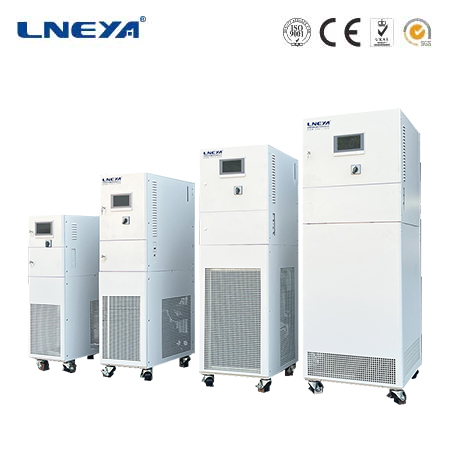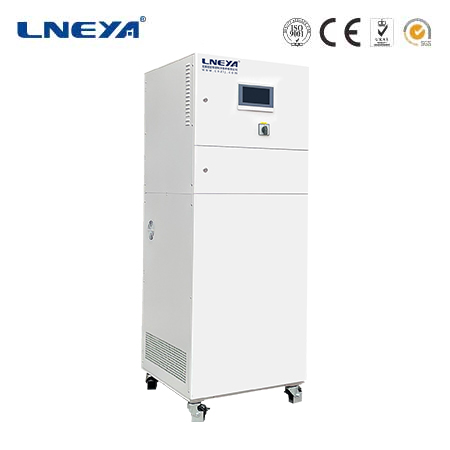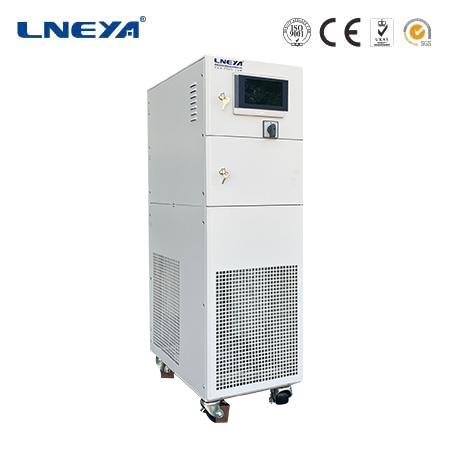water bath machine
Water bath machines have become an indispensable tool in many fields, especially in laboratories and certain industrial processes. Their ability to provide a controlled and stable thermal environment makes them suitable for a wide range of applications. By using water as the heat – transfer medium, water bath machines can offer a more uniform temperature distribution compared to some other heating or cooling methods, which is crucial for ensuring consistent results in experiments and processes.

Working Principle of Water Bath Machines
The basic working principle of a water bath machine revolves around heat transfer. When the machine is set to a specific temperature, the heating or cooling element comes into play.
Heating Process: In a heating – only water bath machine, an electric heating element is immersed in the water. When powered on, the heating element dissipates heat, which is then transferred to the water through conduction. As the water temperature rises, it starts to circulate, distributing the heat evenly throughout the bath due to natural convection. In some more advanced models, a mechanical stirring mechanism is added to enhance this heat distribution. The temperature of the water is continuously monitored by a temperature sensor, which sends feedback to the temperature controller. Once the set – point temperature is reached, the controller adjusts the power supply to the heating element to maintain the temperature within a narrow range.
Cooling Process: For water bath machines with cooling capabilities, a refrigeration system is incorporated. This system works on the principle of the refrigeration cycle. A compressor compresses a refrigerant, raising its pressure and temperature. The hot, high – pressure refrigerant then flows through a condenser, where it releases heat to the surrounding environment and condenses into a liquid. The liquid refrigerant passes through an expansion valve, which reduces its pressure and causes it to cool. This cold refrigerant then enters an evaporator, which is in contact with the water in the bath. Heat from the water is transferred to the refrigerant, cooling the water. Similar to the heating process, a temperature sensor and controller are used to regulate the cooling process and maintain the desired temperature.
Components of Water Bath Machines

Water Container
The water container is the main body of the water bath machine. It is typically made of materials such as stainless steel or high – quality plastics. Stainless steel is preferred in many applications due to its durability, resistance to corrosion from water and chemicals, and good heat – transfer properties. The container is designed to hold a specific volume of water, ranging from small benchtop models with capacities of a few liters to large industrial – scale units that can hold hundreds of liters. The shape of the container can vary, but rectangular or cylindrical shapes are common, with the interior often having a smooth surface to facilitate water circulation and cleaning.
Heating or Cooling Element
Heating Elements: As mentioned earlier, electric heating elements are commonly used in water bath machines. These can be in the form of coiled resistive wires enclosed in a protective sheath, usually made of materials like stainless steel or quartz. The power rating of the heating element depends on the size of the water bath and the desired heating speed. For example, a small benchtop water bath for laboratory use may have a heating element with a power rating of 500 – 1000 watts, while a larger industrial water bath could have a heating element with several kilowatts of power.
Cooling Elements: In water bath machines with cooling functions, the cooling element is part of the refrigeration system. The evaporator, which is the component responsible for absorbing heat from the water, is designed to have a large surface area in contact with the water to maximize heat transfer. It can be a finned – tube heat exchanger or a plate – type heat exchanger, depending on the design of the water bath machine.
Temperature Controller
The temperature controller is a crucial component that ensures the water bath machine maintains the set – point temperature. It consists of a temperature sensor, a control unit, and an output device.
Temperature Sensors: There are different types of temperature sensors used in water bath machines. Thermistors are commonly employed due to their high sensitivity and relatively low cost. A thermistor is a semiconductor device whose resistance changes with temperature. In a water bath, the thermistor is placed in the water to accurately measure the temperature. Platinum Resistance Temperature Detectors (RTDs) are also used in some high – precision applications. RTDs offer excellent accuracy and stability over a wide temperature range.
Control Unit: The control unit receives the temperature data from the sensor and compares it with the set – point temperature. Based on this comparison, it determines whether to increase or decrease the power to the heating or cooling element. The control algorithm can be simple on – off control, where the heating or cooling element is either fully on or fully off, or more advanced control methods such as Proportional – Integral – Derivative (PID) control. PID control provides more precise temperature regulation by taking into account the current temperature error, the integral of the error over time, and the rate of change of the error.

Output Device: The output device, such as a relay or a solid – state relay, is used to switch the power supply to the heating or cooling element based on the signals from the control unit. In the case of a relay, it physically opens or closes an electrical circuit, while a solid – state relay uses semiconductor devices to perform the same function without mechanical moving parts, resulting in a longer lifespan and faster response times.
Stirring Mechanism
To ensure uniform temperature distribution throughout the water bath, a stirring mechanism is often included. This can be a simple impeller – type stirrer, which is driven by an electric motor. The impeller rotates, creating a circular flow of water in the bath. In some cases, magnetic stirrers are used. A magnetic stirrer consists of a magnetic bar placed in the water bath and an external magnetic drive. When the external magnetic drive rotates, it causes the magnetic bar to spin, generating a stirring action. Stirring helps to eliminate temperature gradients within the water, ensuring that all samples placed in the bath are exposed to the same temperature.
Types of Water Bath Machines
Benchtop Water Bath Machines
Benchtop water bath machines are designed for small – scale applications, typically in laboratory settings. They are compact in size, making them suitable for placement on a laboratory bench. These machines usually have a relatively small water – container capacity, ranging from 1 – 10 liters. Benchtop water bath machines are often used for incubating small biological samples, such as cell cultures or enzyme reactions. They can also be used for heating small volumes of chemicals during laboratory experiments. Some benchtop models are equipped with digital temperature controllers, allowing for precise temperature setting and monitoring.
Floor – Standing Water Bath Machines
Floor – standing water bath machines are larger in size and are designed for applications that require a larger working volume. They can have water – container capacities ranging from 20 – 200 liters or more. These machines are commonly used in industrial settings, such as in the food and beverage industry for heating or cooling large batches of products. In a food processing plant, a floor – standing water bath machine may be used to heat cans of food during the sterilization process. They can also be used in some large – scale laboratory research projects where a larger quantity of samples need to be processed at a controlled temperature.
Programmable Water Bath Machines
Programmable water bath machines offer enhanced functionality compared to basic models. They allow users to set a series of temperature profiles over time. For example, in a biochemical experiment, the temperature of the water bath may need to be gradually increased or decreased in a specific pattern. Programmable water bath machines can be programmed to follow such complex temperature profiles. They usually have a user – friendly interface, such as a touch – screen display, where users can input the desired temperature settings, the time intervals for each setting, and other parameters. These machines are often used in research and development laboratories where precise control of temperature over time is crucial for understanding the behavior of samples or materials.
Applications of Water Bath Machines
Laboratory Applications
Biological Research: In biological laboratories, water bath machines are extensively used for incubating biological samples. For instance, cell cultures need to be maintained at a specific temperature, usually around 37°C, which is the normal body temperature of humans. Water bath machines provide a stable and controlled environment for cell growth and survival. Enzyme reactions also often require a specific temperature to proceed at an optimal rate. By placing the reaction vessels in a water bath, researchers can ensure that the enzymes are exposed to the right temperature conditions.
Chemical Reactions: In chemistry laboratories, water bath machines are used for heating chemical reactions. Some chemical reactions are exothermic or endothermic and require a controlled temperature to proceed safely and efficiently. For example, the synthesis of certain organic compounds may require heating the reaction mixture at a specific temperature for a certain period. Water bath machines offer a gentle and uniform heating method, which is important for reactions that are sensitive to rapid temperature changes. They can also be used for melting substances, such as waxes or low – melting – point metals, in a controlled manner.
Medical and Pharmaceutical Applications: In medical and pharmaceutical research, water bath machines are used for various purposes. In the production of vaccines, the components may need to be incubated at specific temperatures to ensure proper formulation. Water bath machines are also used in blood banks to maintain the temperature of blood samples within a safe range. In medical diagnostic laboratories, they can be used for heating reagents or samples during certain diagnostic tests.
Industrial Applications
Food and Beverage Industry: In the food and beverage industry, water bath machines play a crucial role. They are used for heating products during processes such as cooking, sterilization, and pasteurization. For example, in the production of canned foods, the cans are placed in a water bath to heat them to a specific temperature for a set period to kill any harmful microorganisms. In the brewing industry, water bath machines can be used to control the temperature of the fermentation process, ensuring that the yeast ferments the sugars in the wort at the optimal temperature to produce the desired flavor and alcohol content.
Plastic and Rubber Industry: In the plastic and rubber manufacturing processes, water bath machines can be used for heating molds or for cooling plastic or rubber products. When manufacturing plastic parts using injection molding, the molds may need to be heated to a specific temperature to ensure proper flow and shaping of the plastic material. After the parts are formed, they may need to be cooled slowly, and a water bath can provide a controlled cooling environment to prevent cracking or warping of the products.
Maintenance of Water Bath Machines
Regular Water Changes
To ensure the proper operation of a water bath machine, regular water changes are necessary. Over time, impurities can accumulate in the water, such as minerals, microorganisms, or residues from samples. These impurities can affect the heat – transfer efficiency of the water bath and may also cause corrosion of the components. In a laboratory setting, it is recommended to change the water in the water bath at least once a week. In industrial applications, the frequency of water changes may depend on the nature of the processes and the quality of the water used. For example, if the water contains a high level of dissolved solids, more frequent water changes may be required.
Cleaning the Water Container
In addition to water changes, the water container should be cleaned regularly. This can be done using a mild detergent and a soft brush. The interior of the container should be scrubbed to remove any deposits or residues. Special attention should be paid to the areas around the heating or cooling elements and the temperature sensor, as these areas are more likely to accumulate impurities. After cleaning, the container should be thoroughly rinsed with clean water to remove any traces of detergent.
Calibration of the Temperature Controller
The temperature controller of a water bath machine should be calibrated regularly to ensure accurate temperature control. Calibration involves comparing the temperature reading of the water bath machine with a known accurate temperature reference, such as a calibrated thermometer. If there is a significant difference between the two readings, the temperature controller may need to be adjusted. The frequency of calibration depends on the accuracy requirements of the applications. In a research laboratory where precise temperature control is critical, calibration may be performed monthly or even weekly. In less – demanding industrial applications, calibration may be done quarterly or annually.
Inspection of Components
Regular inspection of the components of the water bath machine is essential. The heating or cooling elements should be checked for signs of damage, such as broken wires or leaks in the refrigerant system (for cooling – type water bath machines). The stirring mechanism should be inspected to ensure that the impeller or magnetic bar is rotating smoothly. The temperature sensor should also be checked for proper operation. If any component shows signs of wear or malfunction, it should be repaired or replaced promptly to avoid any disruption in the operation of the water bath machine.
In conclusion, water bath machines are versatile and essential devices in both laboratory and industrial settings. Their ability to provide a stable and controlled thermal environment makes them suitable for a wide range of applications. By understanding their working principle, components, types, applications, and maintenance requirements, users can make the most of these machines and ensure accurate and reliable results in their processes.
Related recommendations
dc air conditioning
173DC Air Conditioning: Technology, Efficiency, and Applications DC air conditioning systems are integral to maintaining comfortable and efficient environments in various applications, from reside...
View detailstemperature controller manufacturer
87What is a Temperature Controller Manufacturer? A temperature controller manufacturer is a company that designs, engineers, and produces devices used to regulate and maintain specific temperatur...
View detailslab water chiller
38Introduction to Lab Water ChillersLab water chillers are specialized cooling systems designed to maintain a stable and low temperature for water used in laboratory applications. They play a cruci...
View detailscooler cool
195Enhancing Cooling Efficiency: The Concept of "Cooler Cool" Introduction to "Cooler Cool"The phrase "cooler cool" encapsulates the idea of making cooling systems more effective. Whether it's kee...
View details
 LNEYA Thermal Test Chillers
LNEYA Thermal Test Chillers






HelloPlease log in